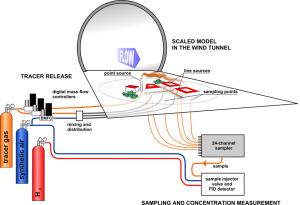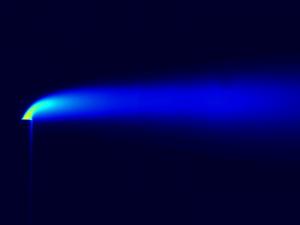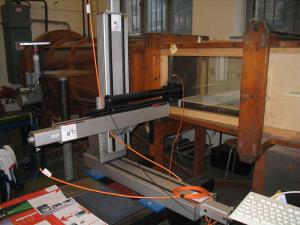| Gas Concentration Measurement |
|
In case of a pollutant dispersion experiment in the wind tunnel, trace gas is released, and the concentration of the gas samples collected at the sampling points is to be determined. For this it is necessary to release a determined amount of methane (a), to collect the gas samples at the same time (b) and then to analyse them. The gas release is managed by digital Brooks 5850S mass flow controller units (0.7% or 0.2% FS), while the sampling and transport of samples to the detector are managed by a self-developed sampler device. The concentrations are defined by flame ionization detector (FID). It is also possible to determine the concentrations around the pollutant source by oil steam released at the place of the source, and then the steam is lighted by laser sheet, and digitalized by a high intensity sensitive camera. The applied laser sheet uses a 6 mW continuous run laser; the sheet is created by an oscillating mirror. The camera is LaVision Imager Intense with 10 bit dynamic range, 30 fps maximum recording speed and 640x480-pixel image size.
Probe Traversing
Where it is necessary (in case of CTA-probe, LDA optics etc) the sensors can be moved in the test section with high precision, so the spatial distribution of the measured physical parameter can be defined (e.g. the difference of velocity along a line-velocity profile). For the actuation stepping motor driven high rigidity linear units (Isel) are used, with an approximately 0.05 mm positioning precision, equipped with computer control.
|








